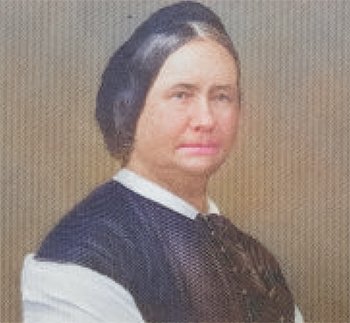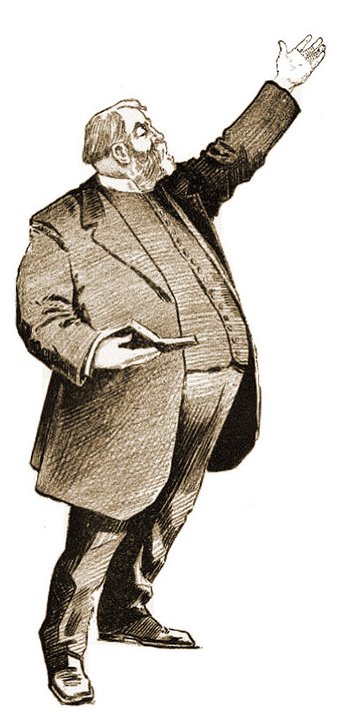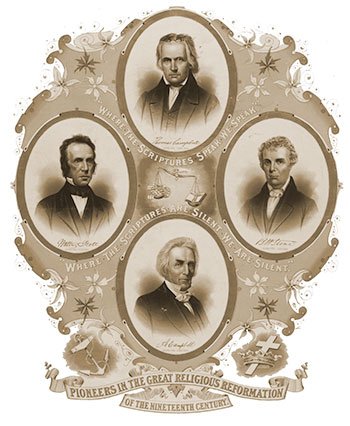The 1857 Hamilton, Ontario Revival

Phoebe Palmer
The 1857 Hamilton, Ontario Revival was a significant religious awakening that had a profound impact on the city of Hamilton, Canada, and beyond. This revival, a part of the larger Third Great Awakening, was characterized by fervent prayer, passionate preaching, and a renewed focus on personal holiness.
It was a short but intense, three-year revival that led to a significant increase in church membership and attendance, and it had a lasting impact on the religious landscape of Canada. This article will explore the history of this revival, including its antecedents, major leaders, and churches involved, as well as its immediate and lasting results.
Religion in Canada Prior to the 1857 Hamilton Revival
Prior to the 1857 revival, religion in Canada was largely dominated by Christianity, with Catholicism being the most prominent denomination in Lower Canada (Quebec) and Protestantism, particularly Anglicanism, prevailing in Upper Canada (Ontario). While there was no official state church, a Christian culture permeated society, and the government cooperated with a limited number of “respectable” Christian churches.
Many evangelical Christians in North America sensed some of the fire had gone out of evangelicalism. Compared to the heady days of John Wesley and George Whitefield, the evangelical movement seemed lukewarm by the mid-1850s. This discontent, coupled with social and economic crises, created a fertile ground for revival.
The Holiness movement, which emerged during this period, sought to recapture the single-minded devotion to God, holy living, and evangelism of the early Methodists. Their commitment to holiness included extensive charitable work, and in 1845 Phoebe Palmer published an influential book, The Way of Holiness.
The Spark that Ignited the Flame
The 1857 Hamilton Revival was sparked by the arrival of Phoebe Palmer, a renowned Methodist preacher from New York City. Palmer, known for her passionate preaching and emphasis on personal holiness, had been instrumental in spreading the Holiness movement in the eastern United States and Canada. In October 1857, while on their way back to New York from a camp meeting in Georgetown, Ontario, Palmer and her husband, Walter, were delayed in Hamilton due to lost luggage. During their unexpected stay, they were invited by local Methodist ministers to conduct a prayer meeting.
It is important to note that the revival was sparked by a lay person, Phoebe Palmer, rather than clergy. This was a unique aspect of the Hamilton Revival and signified a departure from the traditional clergy-led revivals. Palmer’s leadership empowered lay involvement and demonstrated the potential for ordinary individuals to play a significant role in religious awakenings.
On October 9, 1857, the Palmers led a prayer meeting at John Street Methodist Church, where approximately 65 people gathered. During this meeting, there was a call to pray for an “outpouring of the Holy Spirit.” The following day, another meeting was held, and 21 people made a profession of faith in Christ. This marked the beginning of the Hamilton Revival.
The Revival Takes Hold
The revival quickly gained momentum, with daily meetings being held from 7 a.m. to 10 p.m. The movement spread throughout the community, with people from all walks of life attending the meetings. The Methodist churches in Hamilton saw a significant increase in attendance, with membership growing by 1,000 percent. The revival was characterized by fervent prayer, with hundreds attending all-day prayer meetings.
People from all social classes and backgrounds came together in repentance and prayer, seeking a deeper connection with God. The concept of “union prayer meetings,” devoid of denominational influences and contentious issues, contributed to the revival’s success by fostering unity and a shared focus on prayer.
While the sources highlight the importance of prayer meetings during the revival, specific prayers used during this period remain undocumented. Unfortunately, detailed personal testimonies from participants of the 1857 revival are scarce in the available sources.
Key Leaders and Churches Involved
While Phoebe Palmer played a pivotal role in sparking the revival, it was largely carried forward by the local Methodist community. Key churches involved included John Street Methodist Church, where the first prayer meeting was held, and other Methodist churches in the city. The revival was also characterized by the involvement of lay people, who played an active role in organizing prayer meetings and spreading the message of the revival.
The Hamilton Revival, with Phoebe Palmer at its forefront, had a significant impact on the role of women in religious movements. Palmer’s leadership challenged traditional gender roles and demonstrated the ability of women to lead and inspire religious awakenings. The revival also saw active participation from women, further contributing to their growing influence in religious spheres.
Immediate and Lasting Results
The immediate results of the Hamilton Revival were remarkable. In the first ten days, over 400 people were converted. The Methodist churches in the city experienced a surge in membership and attendance. The revival in Hamilton resulted in 500 people making a profession of faith in Christ. In addition, 21 people made a profession of their faith on the first day of the movement, and a total of 100 people were converted on the first Sunday. The Methodist churches of Hamilton grew by 1,000 percent.
The revival also had a lasting impact on the religious landscape of Canada. It contributed to the growth of the Holiness movement, which emphasized personal holiness and sanctification. The revival also sparked a wave of revivals in other parts of Canada and the United States.
The effects of the revival spread to other areas, including New York City, the United States, Great Britain, South Africa, and other nations around the world. In New York City alone, there were 96,000 new believers. The revivals also led to 50,000 new converts weekly, and for two years, churches added 10,000 names weekly to their membership lists.
The revival’s impact extended beyond increased church attendance and conversions. It is believed that the revival contributed to a cessation of crime in Ireland and Wales and the rehabilitation of over 1,000 prostitutes in London, England. Furthermore, the revival inspired improved laws in many nations to assist the poor, oppressed, and outcast. The Methodist connection is strong in the area. The preachers that came out of this movement went on to start the YMCA and the Salvation Army.
Context and Relationship to Other Revivals
The 1857 Hamilton Revival was part of a larger religious awakening that swept across North America in the 19th century, known as the Third Great Awakening. This period was characterized by a renewed interest in religion and a focus on personal experience and emotionalism. The Hamilton Revival was preceded by a series of revivals in the United States, including the Fulton Street Prayer Meetings in New York City.
The financial crisis of 1857, known as the Panic of 1857, may have also played a role in driving people to seek solace and meaning in religion during this time. This economic hardship, coupled with existing social anxieties, created a receptive environment for the revival’s message of hope and spiritual renewal.
The Hamilton Revival, in turn, helped to spark revivals in other parts of Canada and the United States, including a major revival in New York City in the same year. This “infectious nature of revivals” can be attributed to several factors, including the fervent religious atmosphere of the time, increased communication and news of religious experiences spreading rapidly, and the social and economic context that made people more receptive to spiritual messages. The revival was preceded by years of prayer by the Old South Church in Boston.
Scholarly Articles and Historical Accounts
The 1857 Hamilton Revival has been the subject of scholarly interest and historical accounts. Sandra King’s book, “The 1857 Hamilton, Ontario Revival: An Exploration of the Layman’s Revival and The Second Great Awakening,” provides a detailed account of the revival, exploring its origins, key figures, and impact. Other scholarly works, such as “Revivals in North America: The Hamilton, Ontario, Canada Revival of 1857” by Gerald Procee, and “The Day When Hamilton Changed the World” by Daina Doucet, offer further insights into this significant event.
Chronological Timeline
| Date | Event |
|---|---|
| Early 1850s | A devastating cholera epidemic sweeps through Hamilton, causing widespread fear and hardship. |
| March 1857 | The Desjardins Canal train disaster claims the lives of 59 people, adding to the sense of crisis in the community. |
| Mid-1857 | The Panic of 1857, a stock market crash and global recession, hits Hamilton, creating economic hardship and uncertainty. |
| October 9, 1857 | Phoebe and Walter Palmer, delayed in Hamilton due to lost luggage, lead a prayer meeting at John Street Methodist Church. |
| October 10, 1857 | 21 people make a profession of faith in Christ at a meeting led by the Palmers, marking the beginning of the revival. |
| October 1857 | Daily revival meetings commence in Hamilton, drawing large crowds and sparking a spiritual awakening. |
| Late 1857 | The revival spreads to New York City and other parts of North America, fueled by reports of religious experiences and the fervent religious climate. |
| 1858 | The revival reaches Great Britain and Ireland, leading to widespread conversions and social reforms. |
| 1859 | The revival reaches South Africa, impacting various communities and denominations. |
| Following years | The revival’s influence continues to be felt in various Christian movements and social reforms, shaping the religious landscape and inspiring Christian leaders. |
Analysis of Results
The 1857 Hamilton Revival had a significant impact on the religious and social landscape of Canada. It led to a surge in church membership and attendance, particularly among Methodist churches. The revival also contributed to the growth of the Holiness movement, which emphasized personal holiness and social reforms. The revival’s emphasis on prayer and lay involvement had a lasting impact on Christian practices.
Beneficial Takeaways
The 1857 Hamilton Revival offers several beneficial takeaways for Christians today:
- The power of prayer: The revival demonstrated the transformative power of prayer, both for individuals and communities. The daily prayer meetings in Hamilton and the years of prayer preceding the revival by the Old South Church in Boston highlight the importance of persistent, dedicated prayer in bringing about spiritual awakening.
- The importance of lay involvement: The revival highlighted the crucial role of lay people in spreading the Gospel and promoting religious revival. Phoebe Palmer, a lay person herself, sparked the revival, and the active involvement of lay people in organizing meetings and sharing their faith contributed significantly to its success.
- The need for personal holiness: The revival emphasized the importance of personal holiness and a deeper connection with God. The Holiness movement, which gained momentum during this period, stressed the pursuit of holy living and a commitment to God’s will.
- The impact of revival on society: The revival showed that religious awakenings can have a positive impact on society, leading to social reforms and improvements in people’s lives. The revival in Hamilton is believed to have contributed to positive social changes, such as a decrease in crime and the rehabilitation of individuals.
Conclusion
The 1857 Hamilton Revival stands as a testament to the transformative power of religious awakenings. It ignited a spark of faith that spread throughout Hamilton, across Canada, and even to other parts of the world. The revival’s emphasis on prayer, lay involvement, and personal holiness had a profound impact on the religious landscape of the time and continues to offer valuable lessons for Christians today. The revival’s legacy reminds us of the importance of seeking a deeper connection with God, actively participating in our faith communities, and striving for personal holiness in order to bring about positive change in ourselves and in the world around us.
Works cited
The Third Great Awakening
https://renewaljournal.wordpress.com/2014/04/28/mid-nineteenth-revivals-prayerrevivals/#18571
The Great Awakening of 1857-1858 America Prior to the Revival – Eagle Worldwide Ministries https://eagleworldwide.com/data/GreatAwakening.pdf
The Day When Hamilton Changed the World
https://www.eagleworldwide.com/data/HamiltonRevival.pdf
Noon Prayer Meetings and the Revival of 1857/58: The Workplace Connection https://faithandenterprise.org/the-fulton-street-prayer-meetings
The Businessmen’s Revival of 1857-58
https://www.cuamerica.org/businessmens_revival
Phoebe Palmer
https://christianhistoryinstitute.org/magazine/article/phoebe-palmer-from-the-editor
Phoebe Palmer
https://en.wikipedia.org/wiki/Phoebe_Palmer



